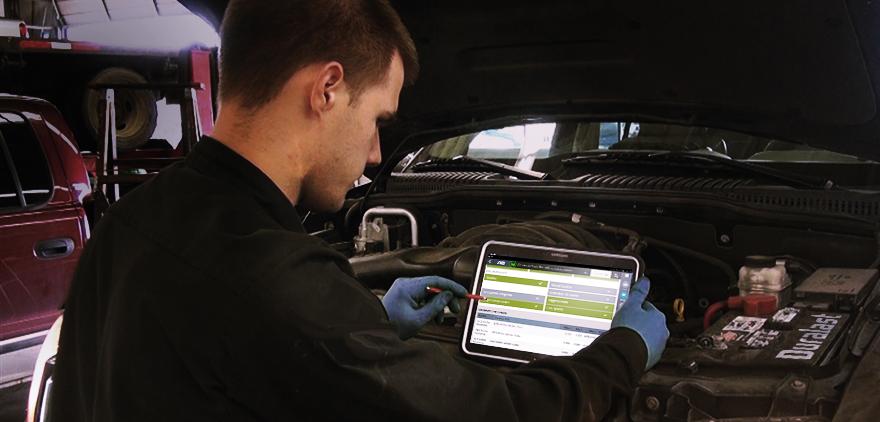

Mode $6 monitor status reporting could be compared to a high school report card. Think back, you’ve just finished your junior year and with trepidation you open your report card. Surprise! You completed all your classes with passing grades (anything over a “D” is overkill). But your “D” grades will end any hope at playing sports and may even banish you from social media stardom.
Here is a quick review of the OBD-II diagnostic modes. Pay attention there will be a test.
- Mode $1: Real-time data stream - Displays sensor values and calculated values. This mode is generally offered on every scan tool, although some will offer more info than others.
- Mode $2: Freeze frame - This is information (data) that was captured when a fault occurred. Usually the first fault but it can be overwritten by a code that is of higher importance. Some cars can capture multiple freeze frames. OBD-II regulations only require one instance of Freeze Frame.
- Mode $3: Stored DTCs - The 5-digit fault code which corresponds to a definition (which may or may not be displayed). Some scan tools will not display all codes.
- Mode $4: Clear/Reset DTCs - Erases memory codes, Freeze Frame data, results, Monitors, and sometimes Adaptive Strategies.
- Mode $5: Oxygen Sensor - This mode displays oxygen sensor test results and the parameters used.
- Mode $6: Non-Continuous Monitors, Misfire Monitors, and the parameters used in judging pass or failure. Helpful in diagnosing intermittent problems, no code issues, and eliminating comebacks. Especially helpful in determining why stubborn monitors will not complete. A failure noted here will soon become a DTC.
- Mode $7: Pending DTCs - First trip failures are stored here before they mature into a DTC and illuminate the MIL.
- Mode $8: Bi-Directional Controls - Allows you to command components ON or OFF, run self-tests, and relearn procedures such as idle relearn. Global OBD-II typically only offers EVAP Vent solenoid control.
- Mode $9: Vehicle ID – Displays vehicle specific information such as the VIN. Permanent VIN encoding in the PCM became mandatory in the United States as of the 2005 Model Year. Some pre-2005 PCMs may have the ability to store the VIN.
Just squeaking by isn’t good enough for high school success, and it is not good enough for getting stubborn OBD-II monitors to complete. This is where Mode $6 diagnostics will prove to be valuable in obtaining the passing grade score of a completed monitor with no stored Diagnostic Trouble Codes (DTCs) and the Malfunction Indicator Light (MIL) commanded OFF. Very often when monitors don't reset it is because of a component that hasn't yet failed but is close to failure. Mode $6 is an important tool in determining why a monitor will not complete or what components are close to failure. It tells you if a monitored component passed or failed and what “grade” it earned – but only if the scan tool has been set up properly and the component monitor has completed its task.
It is important to have some background knowledge before using Mode $6 data. You can find quite a bit of this background information in ALLDATA located under Computers and Control Systems in the Testing and Inspection area.
Imagine that your customer cannot pass an emissions test because a catalyst monitor will not complete. Looking at the Inspection/Maintenance information in ALLDATA we see that the Oxygen sensors provide the information the PCM/ECM needs to judge a pass or fail of the catalytic converter.
Let’s first look at what code would be set by a defective catalytic converter. ALLDATA shows that a P0420 would indicate “Catalyst System Efficiency Below Threshold.”

Look up the code definition from ALLDATA and see that data from the front and rear Oxygen sensors is used to test the catalytic converter efficiency.
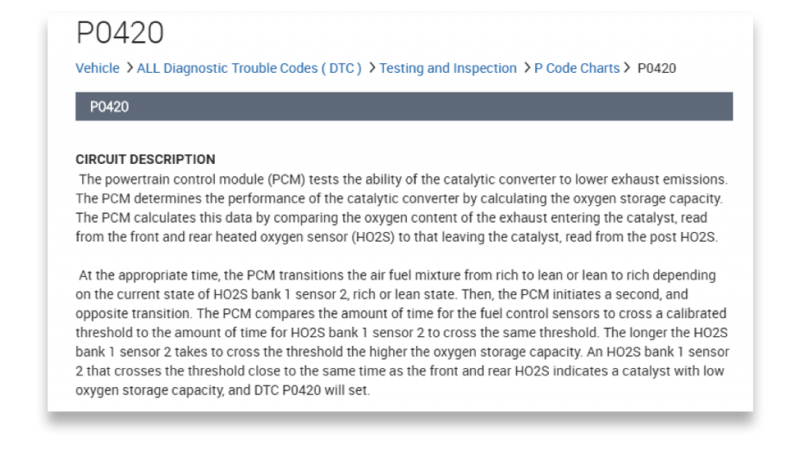
So, the Oxygen sensors need to be on their game before they can be trusted to judge the health of the catalytic converter. If you look at O2 sensor monitor data you may see that although the Oxygen sensors have all successfully completed their tests, they will not be eligible for a "scholarship" due to just barely passing scores. The strategy of many PCM/ECMs is to run such a monitor repeatedly until the tested component has either passed by a larger margin or has failed to make the grade.How do we find this Mode $6 information on our scan tool? While the answer is shown on the ALLDATA scan tool, this information can be found in similar form on other capable scan tools.
After connecting to the Data Link Connector (DLC) you’ll want to start by entering the Year, Make, Model, and Engine in your scan tool. Don’t pick Generic OBD-II or you will be wondering what the hexadecimal you’ll do with the resulting gibberish.
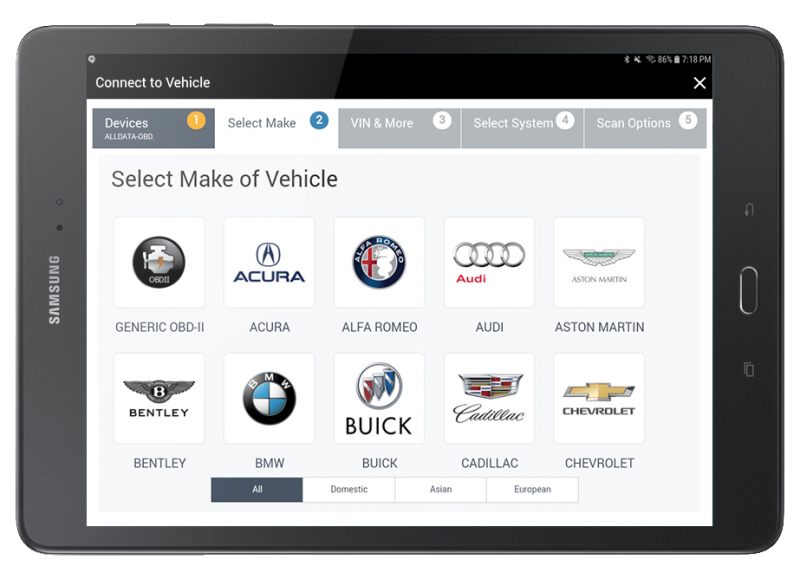
When you get to this point you will want to choose “Generic Powertrain” and then “Next.”
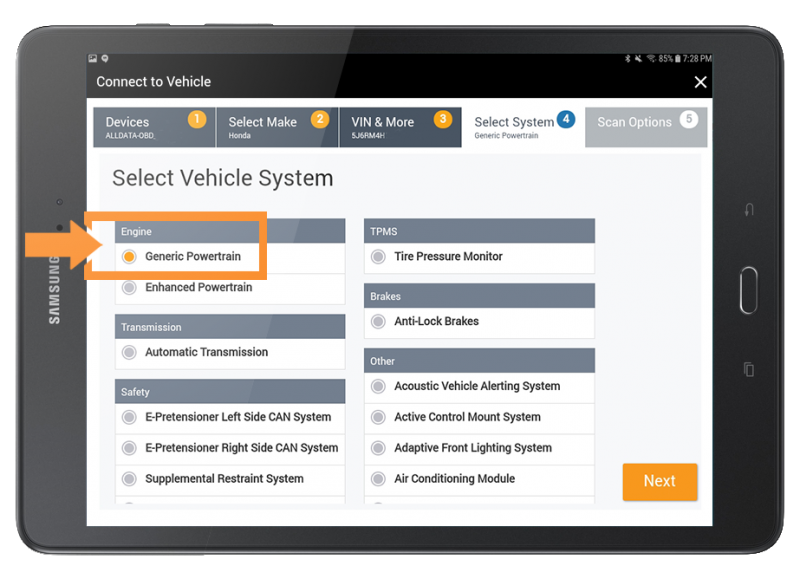
When you see this screen select “Monitor” on the right side. Remember, this procedure will work on most capable scan tools with minor differences in navigation.
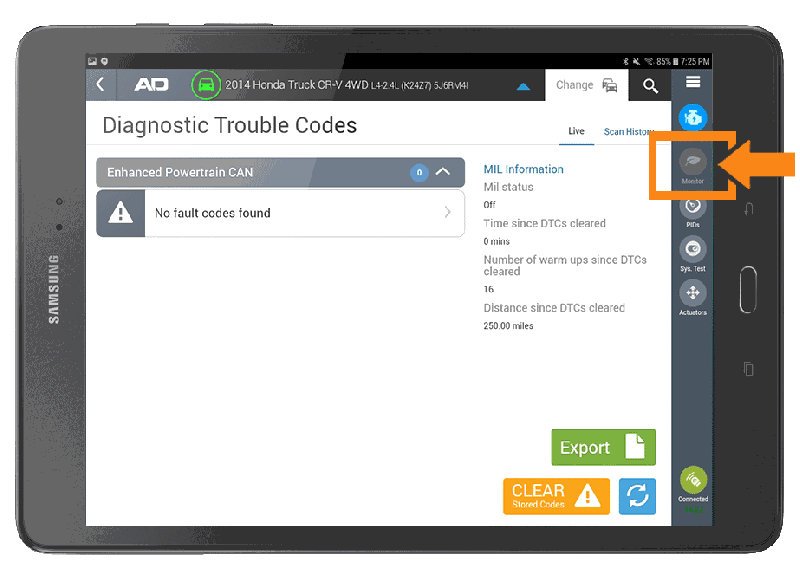
This will bring up the “Emissions Monitors” screen. For Mode $6 information to be valid you need to first confirm that the monitors for our Oxygen sensors have completed.
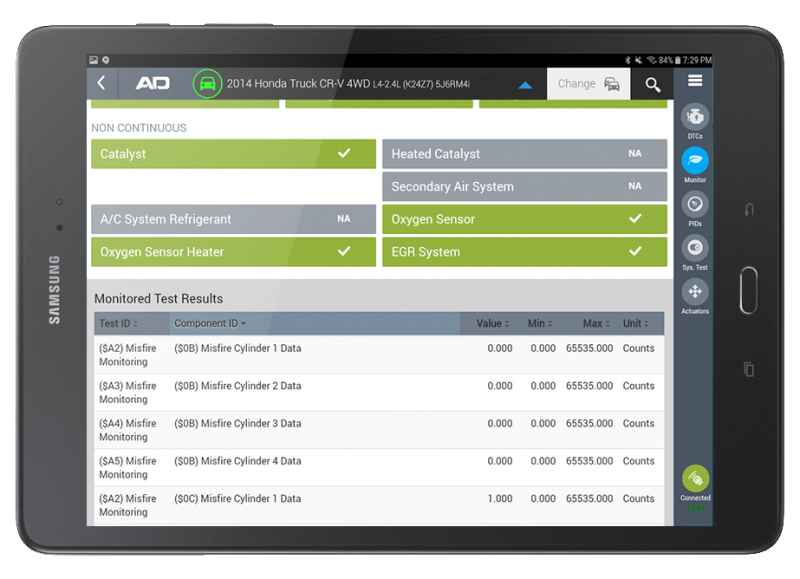
Since they have, we can scroll down and see the Mode $6 data for this system. You should carefully study every Test ID value, looking for measurements that are close to failing. On this pre-CAN network car, you can expect to only see a minimum OR a maximum value posted. Any measurement that bumps up to that posted value can trigger the monitors to keep running until the grade improves or it fails. This will prevent the catalyst monitor from running as it depends on the Oxygen sensors being accurate. You don’t want any “D” students here. If the Oxygen sensors earned a good grade you would move onto the Catalyst efficiency monitoring scores for evidence that it is perhaps slacking off and is being subjected to multiple testing.
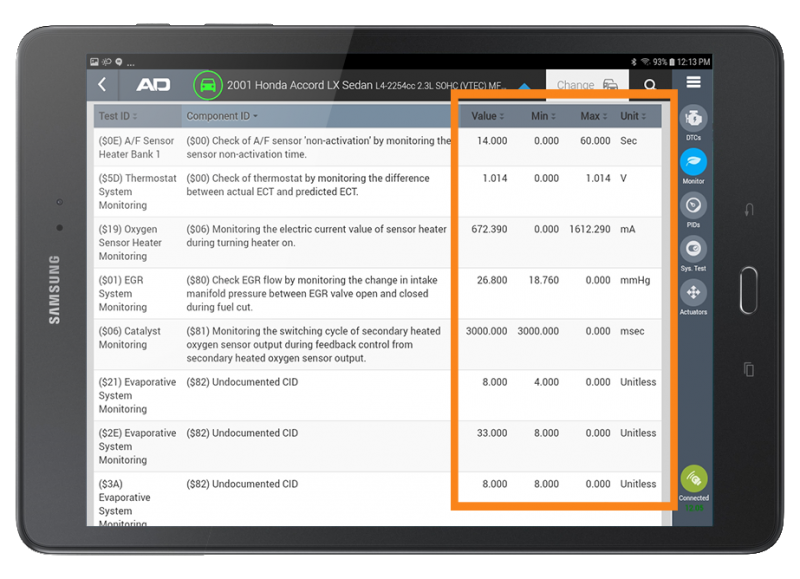
If you see that you have multiple monitors that are incomplete (as you see below), you will not be able to trust the Mode $6 information. Mode $6 data is only useful IF that monitor has completed. And early OBD-II vehicles will gladly lead you astray with bogus test values if you are looking at components that have “incomplete” as their grade.
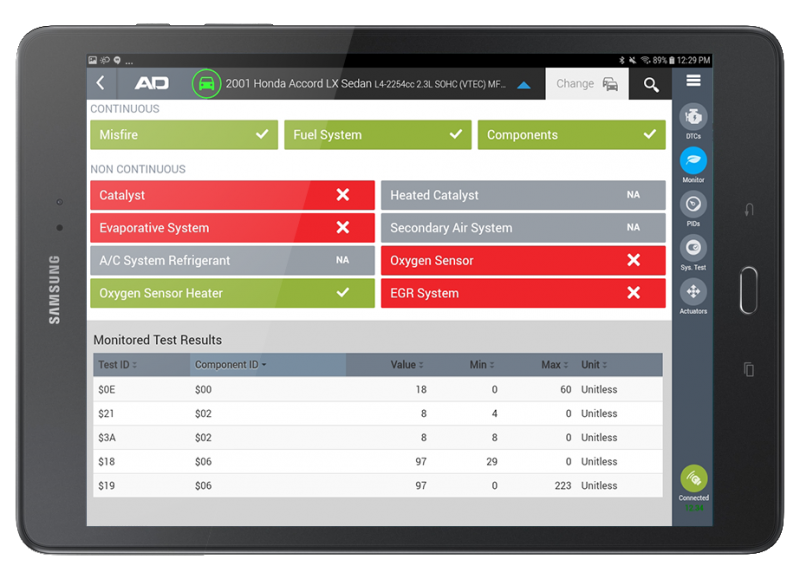
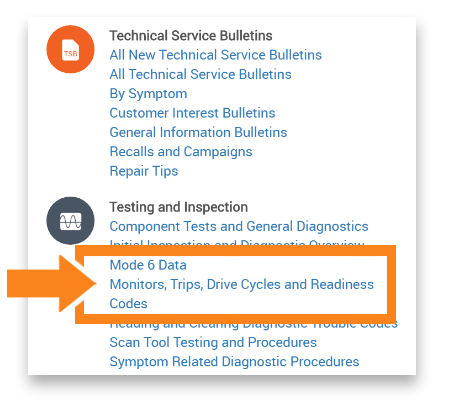
If you see multiple incomplete monitors you’ll want to head on over to the drive cycle information in ALLDATA under Computers and Control Systems > Testing and Inspection. Follow the speed, throttle, coasting, and braking procedures carefully to improve your monitor completion rate.
If the car you’re testing is a CAN (Controller Area Network) car, you’ll get a bit more information in Mode $6. Many Test IDs will give you both Minimum and Maximum values, a big improvement from pre-CAN OBD-II vehicles. CAN vehicles will also display a test value of all zeros if that monitor is incomplete (and therefore the data cannot be trusted). Note in this image that “Min” and “Max” limits are available for such monitored components as the EVAP purge and the Variable Valve Timing (VVT). CAN networks were mandatory on all 2008 Model Year and newer cars and light trucks; some vehicles went CAN long before then just because they CAN (could).
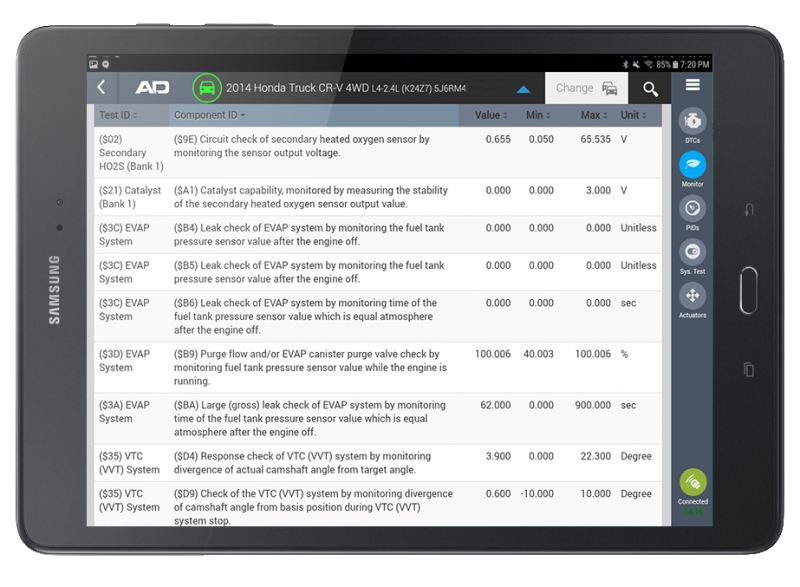
Mode $6 data may not always be crystal clear, and it may be reported in nonsensical numbers. For example, if the bank 1 sensor 1 Oxygen sensor shows a value of 50, and the failure limit is 500, the sensor is probably okay. The same vehicle with a drivability problem and an O2 sensor tested value of 440 should clue you in to the fact that more O2 testing is needed.
But even with its limitations Mode $6 data is a useful tool to help you make the grade and earn passing marks from your customers.
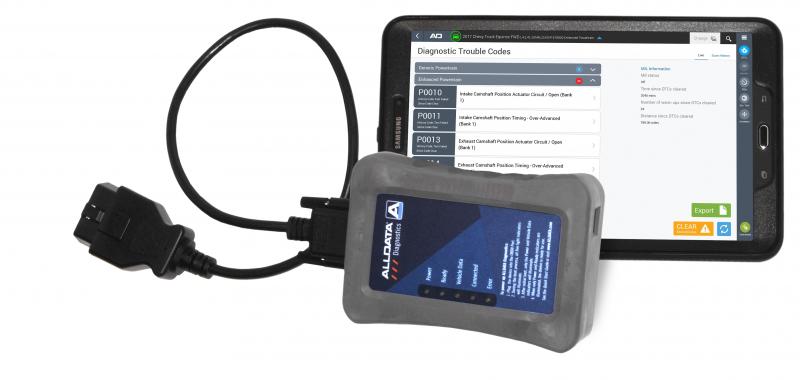
The information in this article was demonstrated using ALLDATA Diagnostics™. ALLDATA Diagnostics is a subscription based, professional-level scan tool that transforms your tablet into a bi-directional control device. It links vehicle specific trouble codes to relevant OEM-accurate articles. To get a free demo of ALLDATA Diagnostics, simply call (888) 853-7309 or click here to get started.
Want to see how ALLDATA can improve shop efficiency? Check out our suite of products, each designed to contribute to both shop efficiency and productivity.
If you would like to read more articles like this one please subscribe to ALLDATA News.





